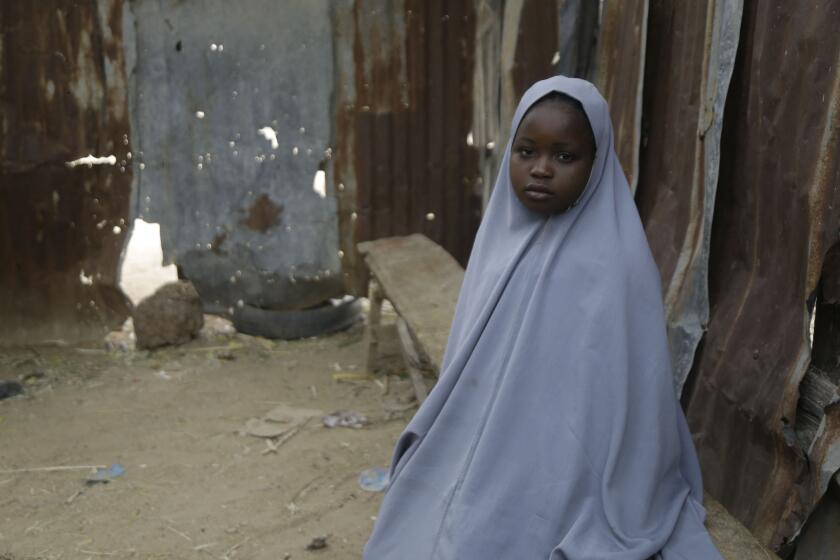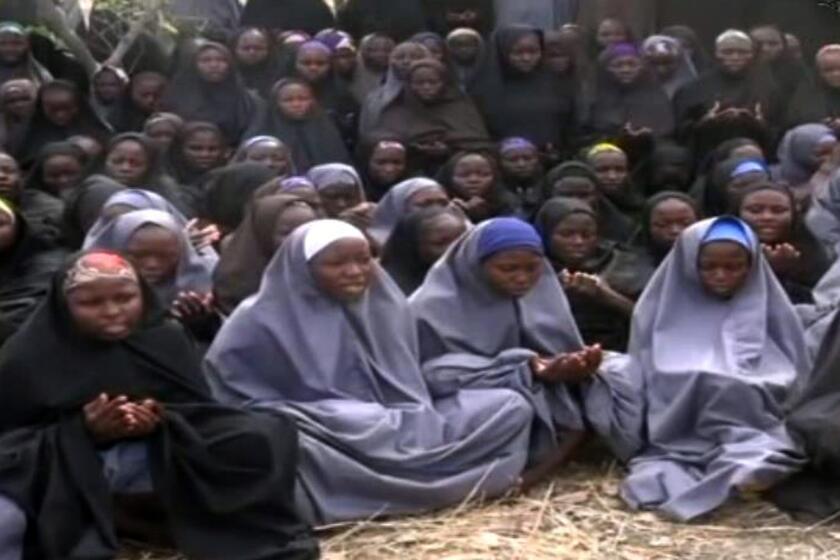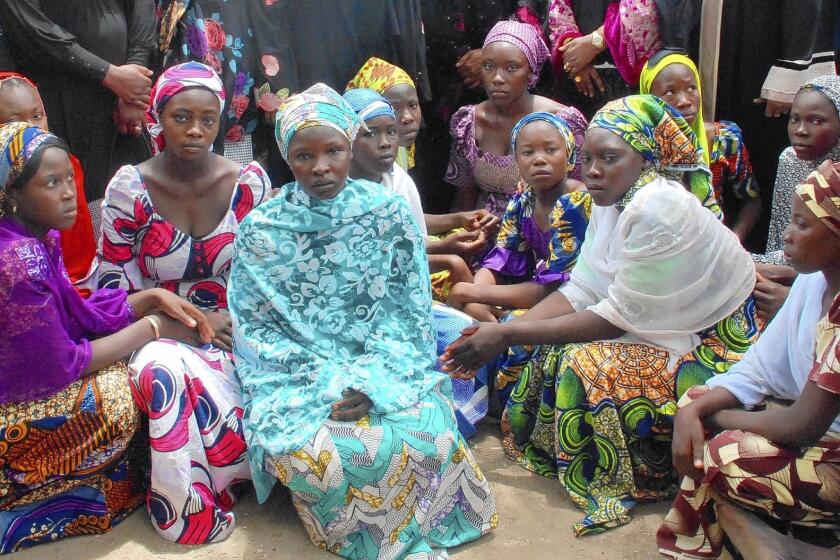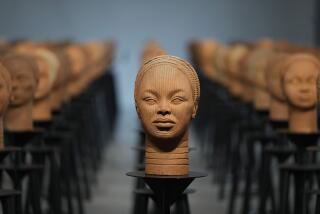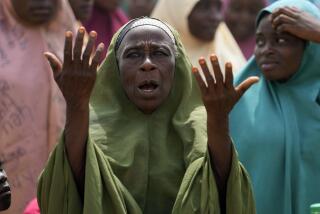‘I think of them’: Abducted Nigerian schoolgirls remembered

- Share via
ABUJA, Nigeria — Margret Yama’s phone screensaver is a picture of her cousin, Rifkatu Galang, who is still held by Boko Haram extremists nearly nine years after she and 275 other girls were seized from their school in northeastern Nigeria.
Yama was among those taken but later freed. Dozens of others have been rescued or found, but 94, including her cousin, remain missing in what was one of the Islamic extremist group’s most daring attacks in Nigeria.
“I saved her as my screensaver so that any time I see her face, it will remind me to be praying for her to return” along with the others, 25-year-old Yama said. “They are in my prayers every day.”
On April 14, 2014, Boko Haram stormed the Government Girls Secondary School in the Chibok community in Borno state and abducted the girls as they prepared for science exams. Many of the girls remained missing, sparking the #BringBackOurGirls social media campaign that involved celebrities worldwide including former U.S. first lady Michelle Obama.
Now, the missing girls are being remembered in new sculptures created by French artist Prune Nourry in collaboration with Obafemi Awolowo University.
Inspired by ancient Nigerian Ife terracotta heads, the series titled “Statues Also Breathe” tries to recreate the girls’ facial expressions and hair patterns. Nourry hopes the sculptures on display in Nigeria’s commercial hub of Lagos will remind the world of a largely forgotten tragedy.
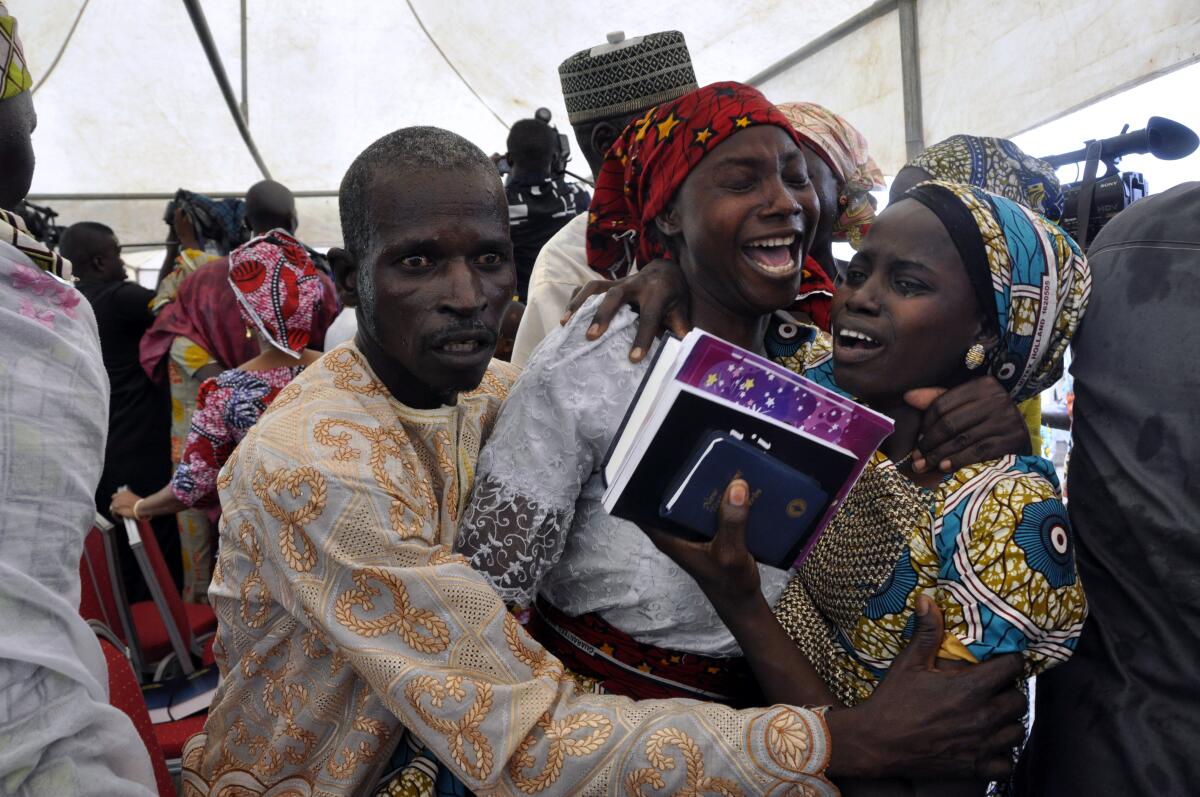
“These heads personify the absent girls, still missing, so that we don’t forget them, and raise the question of the rights of girls to a safe education on a global scale,” the artist told the Associated Press.
This year, about a dozen of the missing girls returned amid news that some had died in custody. Brief hope quickly faded into more anguish for families of the ones still missing.
The students were abducted last week from a boarding school in Nigeria’s latest mass kidnapping. The president has called for greater vigilance.
Zanna Lawan, whose daughter was 16 when she was abducted, said one of the girls who returned this year told him that “Aisha has two children with Boko Haram but lost one of her elder sons.”
All of the girls in captivity are married now, Lawan said. “There is nothing I am feeling good for because of this. All that I am now looking for is to see my daughter alive.”
The girls who regained their freedom this year did not come home alone. All had children, 24 total, from the extremists, the parents said.
Over the years, freed girls have spoken of how the fighters forced them into marriages. As the years went by, others who resisted eventually gave in.
“If you see anyone that got married, it is her choice. She is the one that decided that she has lost hope,” said Yama, who regained her freedom in 2017. “Most of them, I think, it is losing hope that made them to marry.”
As Nigerians vowed never to forget scores of missing schoolgirls abducted a year ago by Boko Haram, the horrifying scale of the Nigerian terrorist group’s atrocities was laid bare Tuesday in a report by Amnesty International.
Yama recalled life in the militants’ camps: The girls, when not separated to make their whereabouts difficult for Nigerian security forces to trace, were usually together, often doing nothing. Access to them was restricted except for their husbands.
“We were just together like one family,” Yama said.
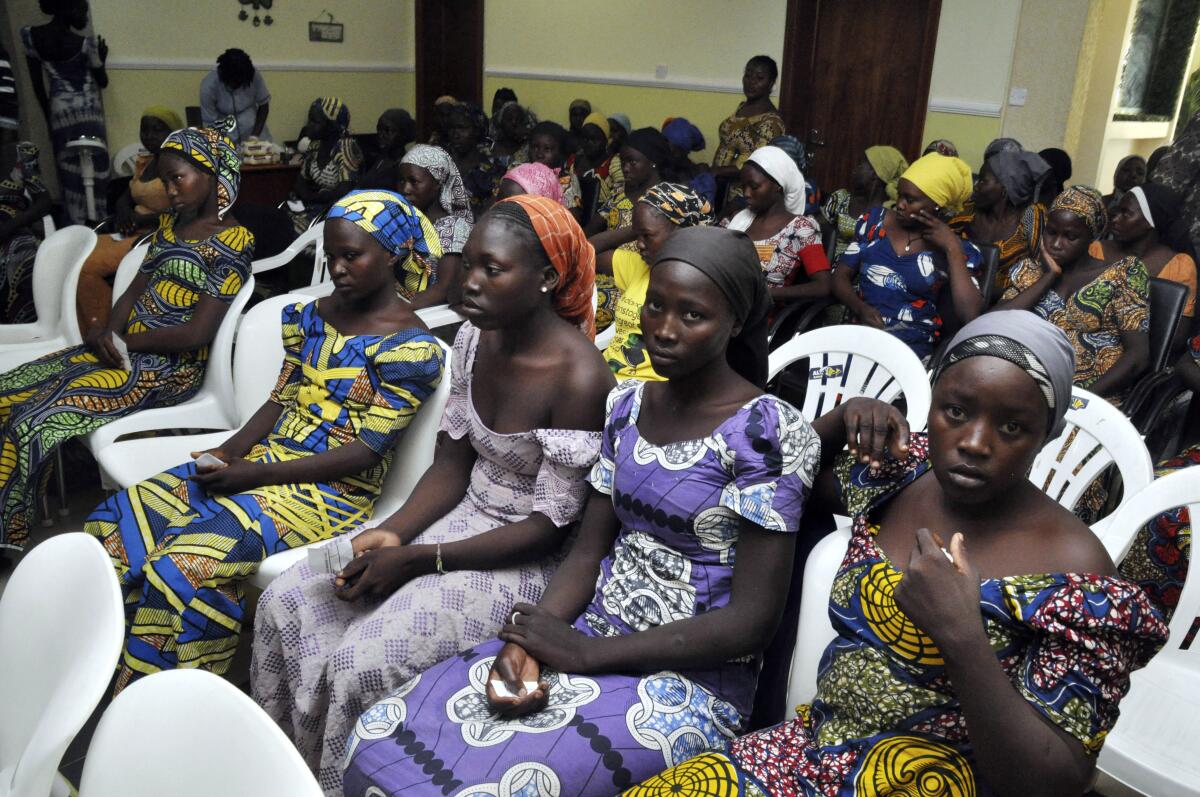
Her mother died shortly after she was abducted in 2014. At least 30 other parents have died in various circumstances since their daughters were taken, according to Lawan, one of the leaders of the Chibok parents’ association.
“Even if you are well, when you are traumatized, anything can happen. If you have a sickness, that will increase to another sickness because of your daughter,” he said.
A year after the girls were kidnapped, now-President Muhammadu Buhari rode a wave of goodwill to power after promising to rescue them. Last week, the nation’s national security advisor, Babagana Monguno, said the military remains committed to the cause but said it involves an “intelligence-driven process, which means it is going to be, unfortunately, painstaking.”
Escape seemed hopeless.
Many parents, however, are beginning to question the government’s commitment to the girls’ freedom. And the Chibok community continues to suffer attacks from Boko Haram and a breakaway faction that has pledged allegiance to the Islamic State group.
“I know the Nigerian army, they can finish this work within 24 hours, but I don’t know what makes it to be so difficult,” said Yakubu Nkeki, whose niece was among the girls freed.
As chair of the Chibok girls’ parents union, Nkeki tries his best to offer hope to families.
“Even though my own has regained freedom, I don’t have peace of mind,” he said.
While studying law at American University of Nigeria, Yama continues trying to navigate her life back to normalcy after years of living with the extremists.
Studies can be challenging because books are one of the luxuries the girls never had while in captivity, she said. Her biggest challenge, though, is staying hopeful that her cousin and all the other girls will return home one day.
More to Read
Sign up for Essential California
The most important California stories and recommendations in your inbox every morning.
You may occasionally receive promotional content from the Los Angeles Times.
